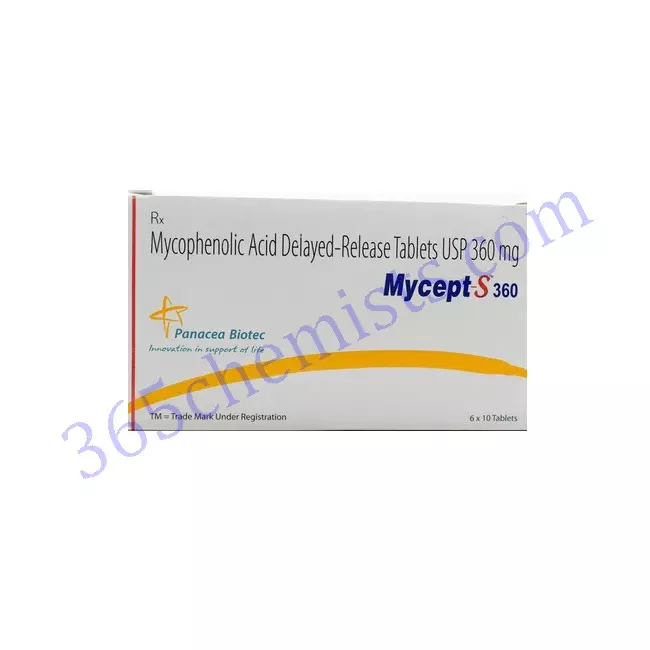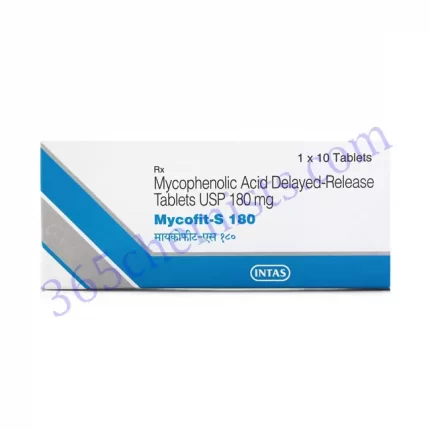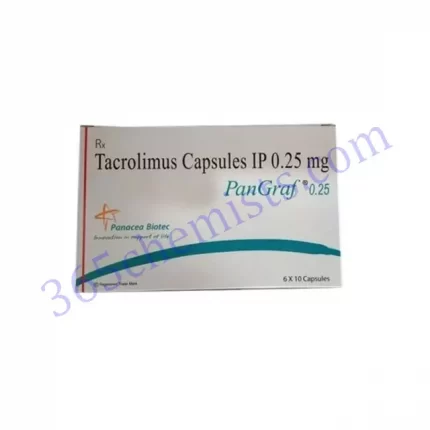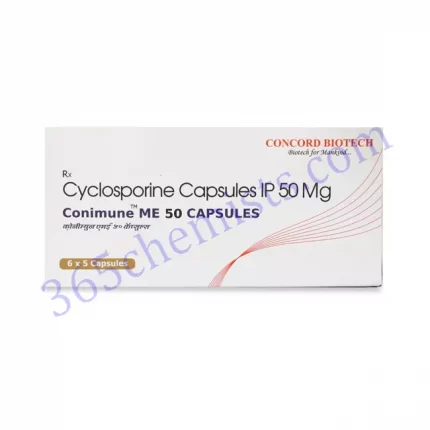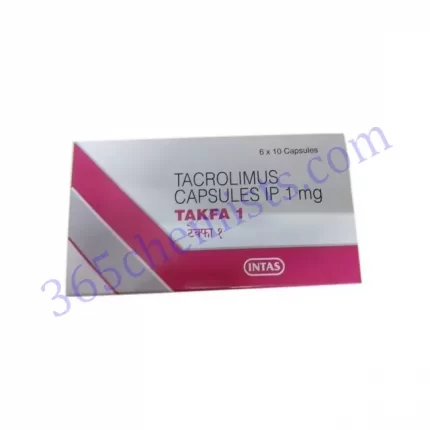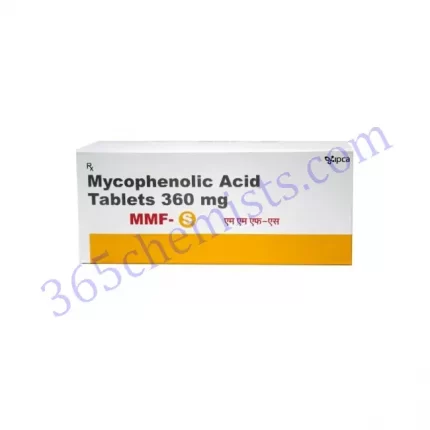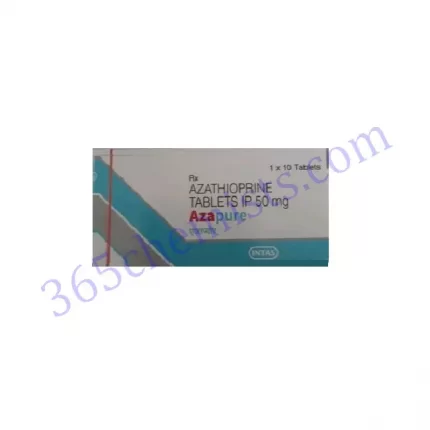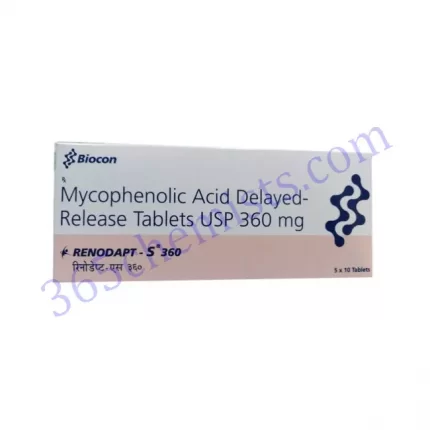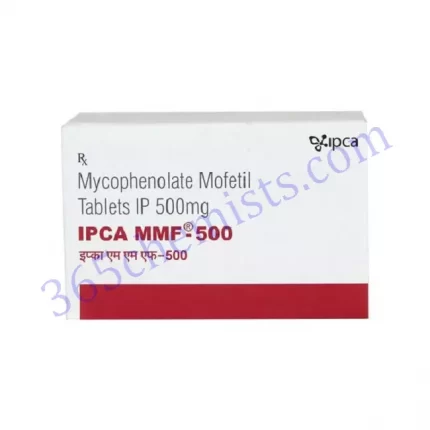Mycept-S 360 Tablet
Mycophenolate mofetil is an immunosuppressive agent that is widely used to prevent organ rejection in patients who have undergone organ transplantation. The active ingredient contained in Mycept-S 360 Tablet is mycophenolate mofetil, which is a medication that prevents organ rejection. This medicine is an immunosuppressant, which means that it works by reducing the activity of the immune system. Immunosuppressants are one of the classes of drugs that are available. In order to achieve the best possible therapeutic results, it is common practise to prescribe Mycept-S 360 Tablet in conjunction with other immunosuppressive medications. This combination therapy is available in tablet form. In the following paragraphs, we will provide a comprehensive overview of Mycept-S 360 Tablet, which will cover its action mechanism, indications, dosage, potential adverse effects, and precautions.
Mechanism of Action
Mycophenolate mofetil, the active ingredient in Mycept-S 360 Tablet, is a prodrug that is rapidly converted into its active form, mycophenolic acid (MPA), in the body. This occurs because mycophenolate mofetil is a prodrug. It is through the selective inhibition of the enzyme inosine monophosphate dehydrogenase (IMPDH) in T and B lymphocytes that MPA is able to exert its immunosuppressive effects. The de novo synthesis of guanosine nucleotides, which is necessary for the proliferation of lymphocytes, is facilitated by this enzyme, which plays a pivotal role in the process. Through the inhibition of IMPDH, the Mycept-S 360 Tablet reduces the production of guanosine nucleotides, which in turn suppresses the proliferation of lymphocytes that are involved in immune response and organ rejection.
Indications
Patients who have received transplants of a kidney, heart, or liver are the primary target population for the primary use of the Mycept-S 360 Tablet indication, which is the prophylaxis of organ rejection. In order to achieve effective immunosuppression while minimising the dosage and potential toxicities associated with each individual drug, it is frequently prescribed in combination with other immunosuppressive medications, such as calcineurin inhibitors (e.g., tacrolimus, cyclosporine), and corticosteroids. This is done in order to achieve optimal immunosuppression. The combination therapy contributes to better patient outcomes while also lowering the risk of rejection.
Dosage and Administration
It is possible for the dosage of Mycept-S 360 Tablet to change depending on variables such as the kind of organ that is being transplanted, the patient’s weight, and the particular treatment plan that has been recommended by the medical professional. It is extremely important to take the medication exactly as directed by the healthcare professional, including paying close attention to the dosage and how it should be administered. Oral administration of the Mycept-S 360 Tablet can either be done with or without food. The tablets should be taken in their entirety, without crushing or chewing them first. In the event that a dose is forgotten, it is important to take it as soon as it is remembered, unless the time for the next scheduled dose is getting close. It is important to avoid taking a double dose.
Dosage
Mycept 500 Tablet
Mycept-S 360 Tablet
Side Effects
Mycept-S 360 Tablet, like any other medication, has the potential to cause a variety of unwanted side effects. The symptoms of nausea, vomiting, diarrhoea, and abdominal pain are the ones that patients report experiencing as their primary gastrointestinal side effects the most frequently. Taking the Mycept-S 360 Tablet with food or adjusting the dosage is a common and effective way to alleviate these symptoms. Due to the immunosuppressive effects of the medication, other potential side effects include infections such as urinary tract infections or respiratory infections. These infections could occur at any time during treatment. It is imperative that any unusual or persistent side effects be reported as soon as possible to the healthcare provider.
Precautions
Before beginning treatment with Mycept-S 360 Tablet, healthcare providers should take into account the patient’s medical history and evaluate the medication’s potential risks and benefits. Patients who have previously shown an extreme sensitivity to mycophenolate mofetil or any of the drug’s components should not take the Mycept-S 360 Tablet. In addition, patients who have a history of gastrointestinal disorders, such as peptic ulcer disease or diverticulitis, should use the medication with extreme caution because it has the potential to make these conditions even worse if taken as directed. Because the Mycept-S 360 Tablet may have an effect on the blood cell count and the function of the liver, it is recommended that these parameters be monitored regularly.
Conclusion
Mycophenolate Mofetil, which is sold under the brand name Mycept-S 360 Tablet, is an immunosuppressive medication that is commonly given to patients who have undergone organ transplantation to reduce the risk of organ rejection. Mycept-S 360 Tablet is able to effectively suppress the immune response and improve the odds of a transplant being successful because it inhibits lymphocyte proliferation in a selective manner. It is common practise to prescribe it in conjunction with other immunosuppressive medications, and it is essential that patients be carefully monitored for any possible adverse reactions. Mycept-S 360 Tablet plays a crucial role in the long-term management of transplant recipients by providing effective immunosuppression. This helps to improve the transplant recipients’ quality of life while also lowering the risk of organ rejection.

